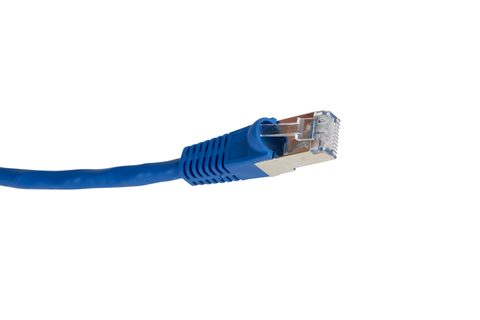Posted in Get Connected, Patch Panel, Patchbay
Difference between Cat5 and Cat6
The difference between cat5 and cat6 cables are a direct reflection of the advancement of computer networking and technological advancement in recent years. They are both used for a wide variety of purposes, but are mainly used as network cables, connecting servers to their respective modems and ISP’s. Like everything in recent years, cables advance in performance and application as dictated by the technology they serve. The main difference between cat5 and cat6 cables is reduced “crosstalk” and faster speeds in the transferring of data and connection.

The electromagnetic signals that emanate from cat cables can cause “crosstalk” when multiple cables are close to one another within a computer networking hub. The interference caused by cables being too close to each other can slow speeds and also slow the quality of connection. Increased errors can result from crosstalk, as well as lost pockets of connection capability. Through the incorporation of a new twisted cable design and improved shielding, the difference between cat5 and cat6 is an example of technology developing with computer capabilities.
The difference between cat5 and cat6 cables lie in the methods used to manufacture them and in their capabilities. Cat5 and cat6 cables both share the same end piece, the plug that connects them to their end destination, being a patch panel or a modem. The end piece that both of these cables share is known throughout the industry as an RJ-45. These plugs can connect directly to a computer ethernet jack or router, and have been an industry standard for years.
The speed of a cat5 cable can handle up to 10/100 Mbps (megabytes per second) at 100 Mhz bandwidth, a speed that was quite efficient in earlier applications of the cat5. Cat5E cables were introduced about 15 years ago, and could handle up to 10 times the speed and bandwidth of its predecessor, the cat5. Cat6 cables have been around only a few years less than cat5e cables, and are more robust and thick. Cat6 cables support more industrialized installations and can withstand harsher conditions and also further reduce crosstalk.
If you want to discuss the difference between cat5 and cat6 cables, and how they can improve your workflow in your recording studio, drop us a line at +1 (818) 500-8142 or email us at marketing@bittree.com
We love to talk patch panels!
Subscribe to our newsletter and always be the first to hear about what is happening.
© 2025 Bittree

Jack Field
Author